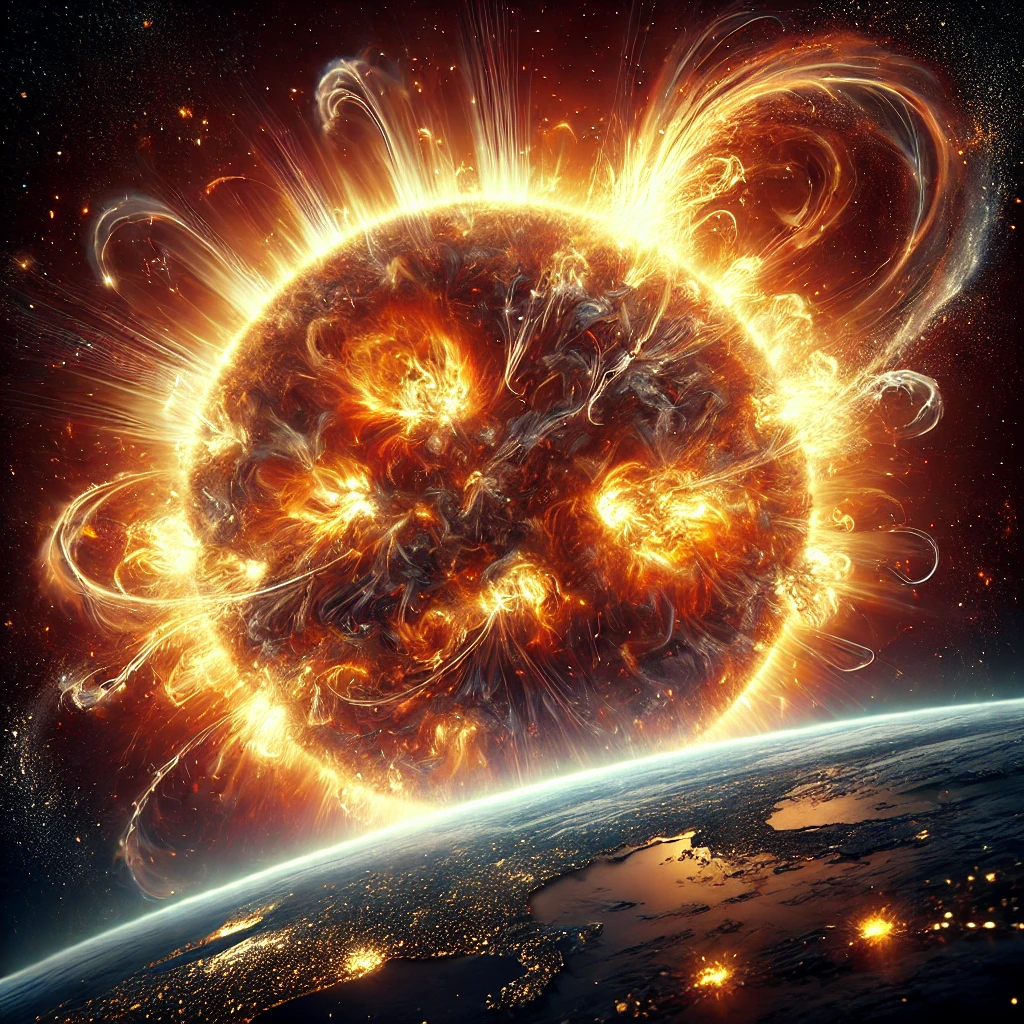Greetings, fellow space travelers! Captain Nova here, broadcasting from the Odyssey Explorer on Day 47 of our 100 Days of Space Exploration journey. Today, we’re delving into one of the most powerful and potentially dangerous phenomena originating from our Sun—coronal mass ejections (CMEs). These colossal bursts of solar plasma and magnetic fields can wreak havoc on space weather, affecting satellites, astronauts, and even life on Earth. But what exactly are CMEs, and why should we care? Let’s find out.

What Is a Coronal Mass Ejection?
CMEs are massive expulsions of plasma and magnetic field energy from the Sun’s corona—the outermost layer of the Sun’s atmosphere. These violent eruptions can release billions of tons of charged particles into space, traveling at speeds up to 3,000 kilometers per second (1.8 million miles per hour). When directed toward Earth, they can trigger geomagnetic storms capable of disrupting our planet’s technological infrastructure.
A CME typically begins with a solar flare or filament eruption, when unstable magnetic fields in the Sun’s corona snap and release stored energy. This event ejects plasma into space, carrying with it a powerful magnetic field that can interact with Earth’s magnetosphere upon arrival.
How Do CMEs Affect Earth?
While our planet is protected by its magnetic field, CMEs can still have profound effects. When a CME collides with Earth’s magnetosphere, it can cause geomagnetic disturbances that manifest in several ways:
1. Geomagnetic Storms
When the charged particles from a CME interact with Earth’s magnetosphere, they generate geomagnetic storms—temporary disruptions in our planet’s magnetic field. These storms can last for hours to days and have widespread consequences, particularly for technology-dependent societies.
2. Impact on Satellites and Communication Systems
CMEs can interfere with satellites by inducing electrical currents in their circuits, potentially damaging their onboard electronics. This can lead to:
- Disruptions in GPS navigation
- Loss of satellite communication signals
- Reduced satellite lifespans due to increased exposure to charged particles
3. Electrical Grid Failures
A powerful CME can induce currents in electrical transmission lines, overloading power grids and causing widespread blackouts. One of the most famous examples is the Carrington Event of 1859, where a massive geomagnetic storm caused telegraph systems to fail, and some telegraph operators even reported receiving electric shocks.
In today’s world, a storm of that magnitude could potentially knock out power grids on a global scale, leading to economic and societal disruptions.
4. Increased Radiation Risks for Astronauts
Astronauts in space, particularly those aboard the International Space Station (ISS) or future deep-space missions, are at risk from the high-energy radiation produced by CMEs. Unlike on Earth, where the atmosphere absorbs most of the harmful radiation, space travelers are directly exposed to these dangerous particles.
To mitigate this risk, space agencies monitor solar activity closely and may instruct astronauts to take shelter in shielded areas of their spacecraft during solar storms.
5. Auroras: A Stunning Side Effect
Not all CME effects are hazardous—some create breathtaking displays of the aurora borealis (Northern Lights) and aurora australis (Southern Lights). When CME particles interact with Earth’s atmosphere, they excite oxygen and nitrogen molecules, causing them to emit beautiful, glowing light in the sky. While mesmerizing, intense auroras often signal a strong geomagnetic storm, which can have more serious consequences.
How Do We Detect and Predict CMEs?
Given their potential impact, monitoring and predicting CMEs is a crucial part of space weather forecasting. Scientists use a variety of tools to study and track CMEs, including:
1. Solar Observatories and Spacecraft
- SOHO (Solar and Heliospheric Observatory) – A joint mission by NASA and ESA, SOHO has been instrumental in studying solar activity since 1995.
- SDO (Solar Dynamics Observatory) – Provides high-definition images of the Sun, helping scientists track sunspots and magnetic activity that may lead to CMEs.
- Parker Solar Probe – A NASA mission designed to study the Sun’s corona up close and improve our understanding of solar storms.
- STEREO (Solar Terrestrial Relations Observatory) – Twin spacecraft that provide 3D views of CMEs, helping scientists track their trajectories.
2. Ground-Based Observatories
Telescopes on Earth also contribute to space weather monitoring, observing sunspots and other indicators of solar activity.
3. Space Weather Prediction Centers
Organizations like NOAA’s Space Weather Prediction Center (SWPC) and NASA’s Heliophysics Division analyze solar data and issue warnings when a CME is detected heading toward Earth. These forecasts help governments, power companies, and satellite operators prepare for potential disruptions.
Protecting Earth from CMEs
While we can’t prevent CMEs, we can take steps to minimize their impact:
1. Hardening Infrastructure
Power grids and satellites can be designed to withstand geomagnetic disturbances. Many modern satellites are equipped with shielding and fail-safes to protect against radiation exposure.
2. Space Weather Forecasting and Early Warnings
By improving our ability to predict CMEs, we can provide advanced warnings to power companies, airlines, and satellite operators, allowing them to take precautionary measures.
3. Astronaut Safety Protocols
Space agencies have emergency protocols in place to protect astronauts from radiation exposure, including scheduling spacewalks around periods of high solar activity and using radiation shelters aboard spacecraft.
Final Thoughts
CMEs are a stark reminder of the Sun’s immense power and influence over our solar system. While these cosmic storms can pose risks to our technology and infrastructure, they also drive scientific exploration and innovation. By studying and preparing for these solar events, we can better protect our planet and continue to push the boundaries of human exploration in space.
As always, stay curious, keep looking up, and remember—the universe is full of wonders waiting to be explored.
Captain Nova
Odyssey Explorer
Leave a Reply